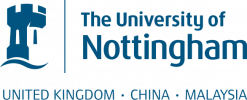© Pint of Science, 2025. All rights reserved.
Is there a spider farm on a secret floor of the QMC?! No... But there is a world class spider lab in the University of Nottingham. Find out about the weird and wonderful world of spider research, from spider silk super materials to an underwater spider that makes its own scuba gear. Learn about the Arachnarium, and how they bring spiders to schools. There will be live spiders at this event.
The Sailing Spider
Dr. Sara Goodacre
(Associate Professor)
Spiders have many super skills that get them out of trouble - they can use silk safety lines, or protect themselves by blending into their surroundings in different ways. But did you know that they are also prepared to take huge risks - even if it gets them into trouble? One of the most 'risky' behaviours is using their silk as a sail to let them be carried by the wind. Once airborne, a spider has no control over how far it travels or where it lands, risking getting them into trouble. I will explore why spiders do this - and why it matters, not only to them, but to us as well.
The Arachnarium
Alastair Gibbons
(PhD Student)
Ella Deutsch
(PhD Student)
Spiders have often been a source of fear to many humans. However, they have also been revered, long providing inspiration for artists and craftsmen across the world. This appreciation is certainly earned, spiders work tirelessly to reduce pest numbers in our fields and their silk and venom production could be the key to new innovations in medicine. Ella is a PhD student at the University of Nottingham’s SpiderLab and will discuss the wealth of reasons to love our eight-legged friends.
The Underwater Spider
Michelle Strickland
(PhD student)
Spider silk is famous for being stronger than steel and tougher than Kevlar - but did you know it’s also antibiotic? Why do we care about a spider that spends most of its life in a bubble of air in the Nottingham canal? What is that guy doing with a beaker full of synthetic silk? Michelle will introduce you to the underwater or diving bell spider, and advances in silk research that could be the beginning of new leaps in medical technology.
Map data © OpenStreetMap contributors.
